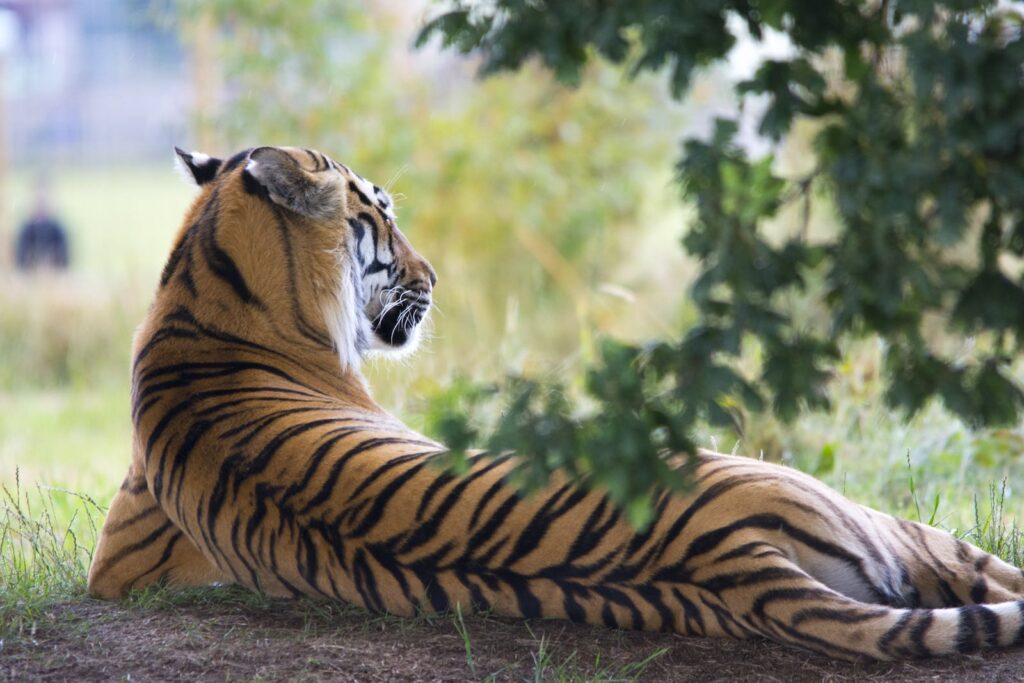
TIGERS
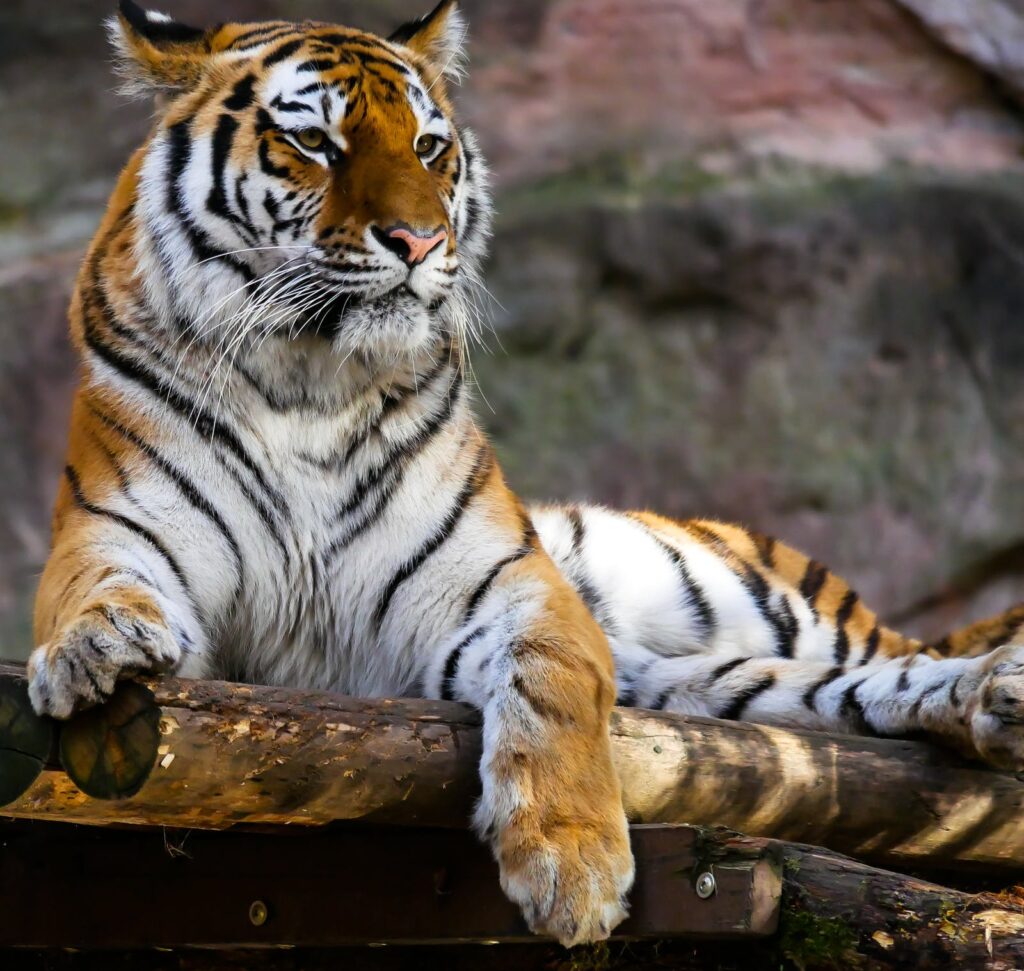
INTRODUCTION:
Welcome to “Roaring Majesty: Exploring the World’s Fascinating Tiger Species,”.
The evolution of tigers can be traced back to about 2 million years ago. Tigers belong to the genus Panthera, which also includes lions, leopards, jaguars, and snow leopards.
Through this subject, we will explore the different types of tigers found around the world, including the Bengal tiger, Siberian tiger, Sumatran tiger, and more. We will discover their unique physical characteristics, behavior, habitat, and conservation status. We will also learn about the threats facing tigers and the conservation efforts being undertaken to protect them.
This subject is for anyone who is fascinated by these magnificent big cats and wants to learn more about their world. With detailed information and stunning visuals, “Roaring Majesty: Exploring the World’s Fascinating Tiger Species” is an immersive exploration of tigers and the efforts to preserve them for future generations. So, come along on this journey and discover the roaring majesty of tigers.
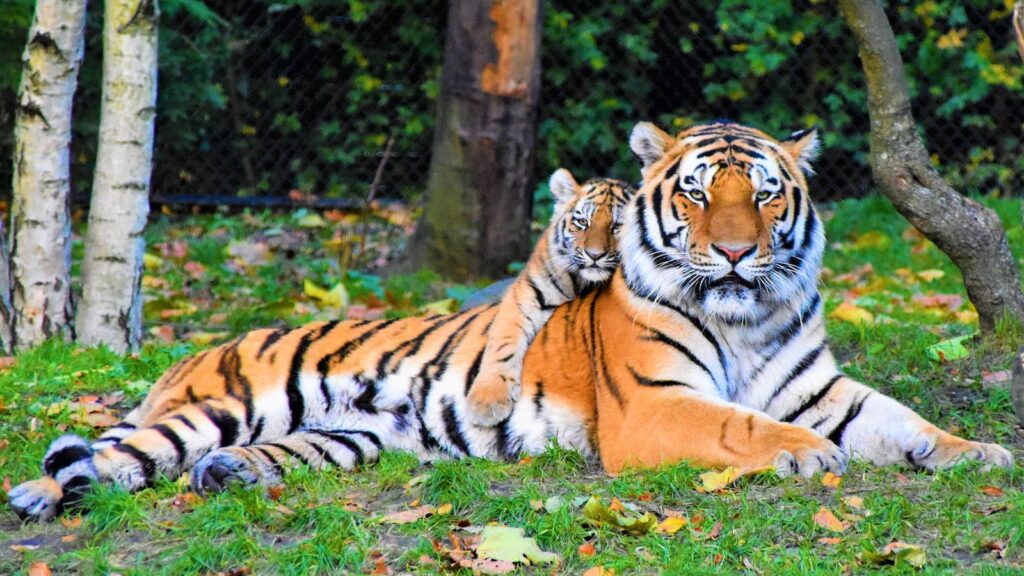
Lets talk about our Roaring Majesty:
There are currently six subspecies of tigers recognized by the International Union for Conservation of Nature (IUCN):
- Bengal Tiger (Panthera tigris tigris) – Found primarily in India, but also in Bangladesh, Bhutan, and Nepal.
- Indochinese Tiger (Panthera tigris corbetti) – Found in Cambodia, Laos, Myanmar, Thailand, and Vietnam.
- Malayan Tiger (Panthera tigris jacksoni) – Found in Malaysia and some parts of Thailand.
- Siberian Tiger (Panthera tigris altaica) – Also known as the Amur tiger, found in Russia’s far east, China and North Korea.
- South China Tiger (Panthera tigris amoyensis) – Found in China, but is believed to be functionally extinct in the wild.
- Sumatran Tiger (Panthera tigris sumatrae) – Found only on the Indonesian island of Sumatra.
- Bengal Tiger (Panthera tigris tigris) –
- The Bengal tiger (Panthera tigris tigris) is a subspecies of tiger that is native to the Indian subcontinent. It is the most common tiger subspecies, and is found primarily in India, but also in Bangladesh, Bhutan, and Nepal.
- Bengal tigers are the second largest subspecies of tiger, after the Siberian tiger, and can weigh up to 550 pounds (250 kg) and grow up to 10 feet (3 meters) in length. They are easily recognized by their distinctive orange-brown coat with black stripes, which serve as camouflage in the tall grasses and forests where they live.
- Bengal tigers are apex predators and carnivores, hunting prey such as deer, wild pigs, and buffalo. They are also known to occasionally prey on domestic livestock, which has led to conflicts with humans.
- Due to habitat loss, poaching, and other human-related threats, Bengal tigers are currently considered an endangered species, with an estimated population of around 2,500 individuals in the wild. Conservation efforts are being made to protect and increase their populations, including the establishment of protected areas and anti-poaching measures.
2. Indochinese Tiger (Panthera tigris corbetti) –
- The Indochinese tiger (Panthera tigris corbetti) is a subspecies of tiger that is native to Southeast Asia, including Cambodia, Laos, Myanmar, Thailand, and Vietnam.
- Indochinese tigers are similar in appearance to other tiger subspecies, with an orange-brown coat and black stripes, but they have a darker coat and narrower stripes than Bengal tigers. They are also smaller in size, typically weighing between 250 to 350 pounds (110 to 160 kg) and growing up to 9 feet (2.7 meters) in length.
- Indochinese tigers are apex predators and carnivores, primarily hunting large mammals such as deer, wild pigs, and cattle. They are also threatened by habitat loss, poaching, and human-wildlife conflict, with an estimated population of fewer than 350 individuals remaining in the wild.
- Conservation efforts are being made to protect and increase the population of Indochinese tigers, including the establishment of protected areas and anti-poaching measures. However, these efforts face many challenges, such as political instability in the region and a lack of funding for conservation programs.
3. Malayan Tiger (Panthera tigris jacksoni) –
- The Malayan tiger (Panthera tigris jacksoni) is a subspecies of tiger that is native to the Malay Peninsula and some parts of Thailand.
- Malayan tigers are smaller in size than other tiger subspecies, typically weighing between 120 to 260 pounds (55 to 120 kg) and growing up to 8 feet (2.4 meters) in length. They have a dark orange coat with black stripes, and their stripes are closer together and thinner than those of other tiger subspecies.
- As apex predators and carnivores, Malayan tigers hunt prey such as deer, wild pigs, and cattle. They are also threatened by habitat loss, poaching, and human-wildlife conflict. It is estimated that there are fewer than 200 Malayan tigers remaining in the wild, making them critically endangered.
- Conservation efforts are being made to protect and increase the population of Malayan tigers, including the establishment of protected areas, anti-poaching measures, and community-based conservation programs. However, these efforts face challenges, such as a lack of funding and political instability in the region.
4. Siberian Tiger (Panthera tigris altaica) –
- The Siberian tiger (Panthera tigris altaica) is the largest subspecies of tiger and is also known as the Amur tiger. It is native to the forests of eastern Russia and some parts of China and North Korea.
- Siberian tigers are massive in size, with males weighing up to 660 pounds (300 kg) and growing up to 10 feet (3 meters) in length. They have a thick orange coat with black stripes, and a pale belly, which helps them to blend in with their snowy environment.
- As apex predators and carnivores, Siberian tigers hunt prey such as elk, deer, and wild boar. They are also threatened by habitat loss, poaching, and human-wildlife conflict. It is estimated that there are fewer than 600 Siberian tigers remaining in the wild, making them critically endangered.
- Conservation efforts are being made to protect and increase the population of Siberian tigers, including the establishment of protected areas, anti-poaching measures, and community-based conservation programs. These efforts have led to a slight increase in the Siberian tiger population in recent years, but much more work is needed to ensure the survival of this magnificent subspecies.
5. South China Tiger (Panthera tigris amoyensis) –
- The South China tiger (Panthera tigris amoyensis) is a subspecies of tiger that is native to southern China. It is also known as the Chinese, Xiamen, or Amoy tiger.
- South China tigers are smaller in size than other tiger subspecies, typically weighing between 220 to 330 pounds (100 to 150 kg) and growing up to 8.5 feet (2.6 meters) in length. They have a yellowish-orange coat with narrow and widely spaced black stripes.
- As apex predators and carnivores, South China tigers hunt prey such as deer and wild pigs. However, they are critically endangered, with no confirmed sightings in the wild since the early 2000s. It is estimated that fewer than 20 individuals remain in captivity, making it one of the most endangered tiger subspecies.
- Conservation efforts are being made to increase the population of South China tigers, including breeding programs in captivity, habitat restoration, and anti-poaching measures. However, these efforts are faced with many challenges, such as habitat loss and fragmentation, illegal trade in tiger parts, and a lack of funding and political will.
6. Sumatran Tiger (Panthera tigris sumatrae) –
- The Sumatran tiger (Panthera tigris sumatrae) is a subspecies of tiger that is native to the Indonesian island of Sumatra.
- Sumatran tigers are smaller in size than other tiger subspecies, typically weighing between 165 to 310 pounds (75 to 140 kg) and growing up to 8 feet (2.4 meters) in length. They have a dark orange coat with black stripes that are thicker and closer together than those of other tiger subspecies.
- As apex predators and carnivores, Sumatran tigers hunt prey such as deer, wild pigs, and cattle. They are also threatened by habitat loss, poaching, and human-wildlife conflict. It is estimated that there are fewer than 400 Sumatran tigers remaining in the wild, making them critically endangered.
- Conservation efforts are being made to protect and increase the population of Sumatran tigers, including the establishment of protected areas, anti-poaching measures, and community-based conservation programs. However, these efforts face many challenges, such as a lack of funding, political instability, and illegal trade in tiger parts.
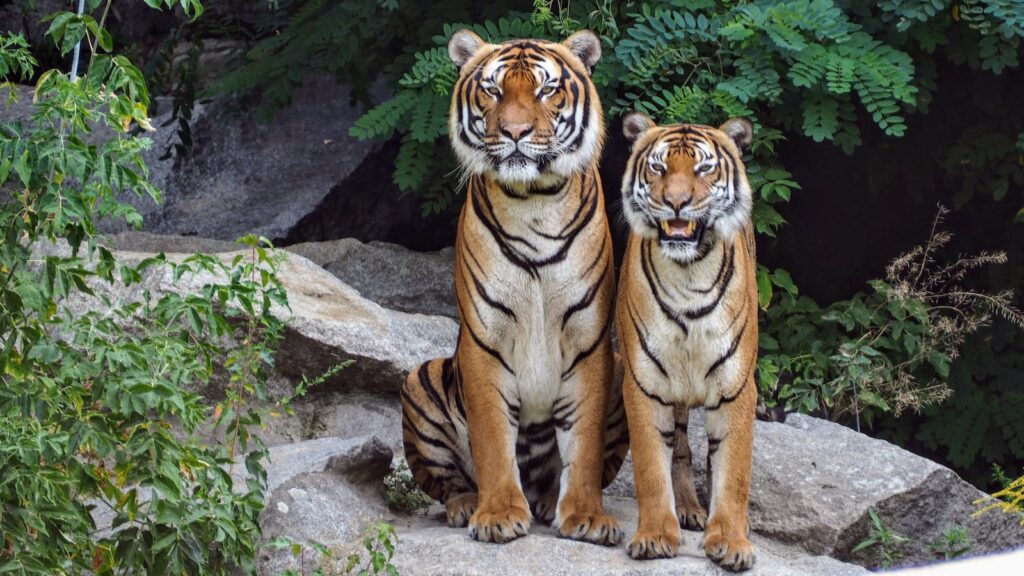
Worldwide Tigers
The exact number of tigers worldwide is difficult to determine due to the secretive nature of the species and the vastness of their habitat. However, according to the most recent estimate by the World Wildlife Fund (WWF), there are approximately 3,900 wild tigers worldwide, distributed across 13 countries in Asia.
This represents a slight increase from the previous estimate of 3,200 tigers in 2010. Despite this positive trend, tigers remain critically endangered due to habitat loss, poaching, and human-wildlife conflict. Conservation efforts are ongoing to protect and increase the tiger population, including the establishment of protected areas, anti-poaching measures, and community-based conservation programs.
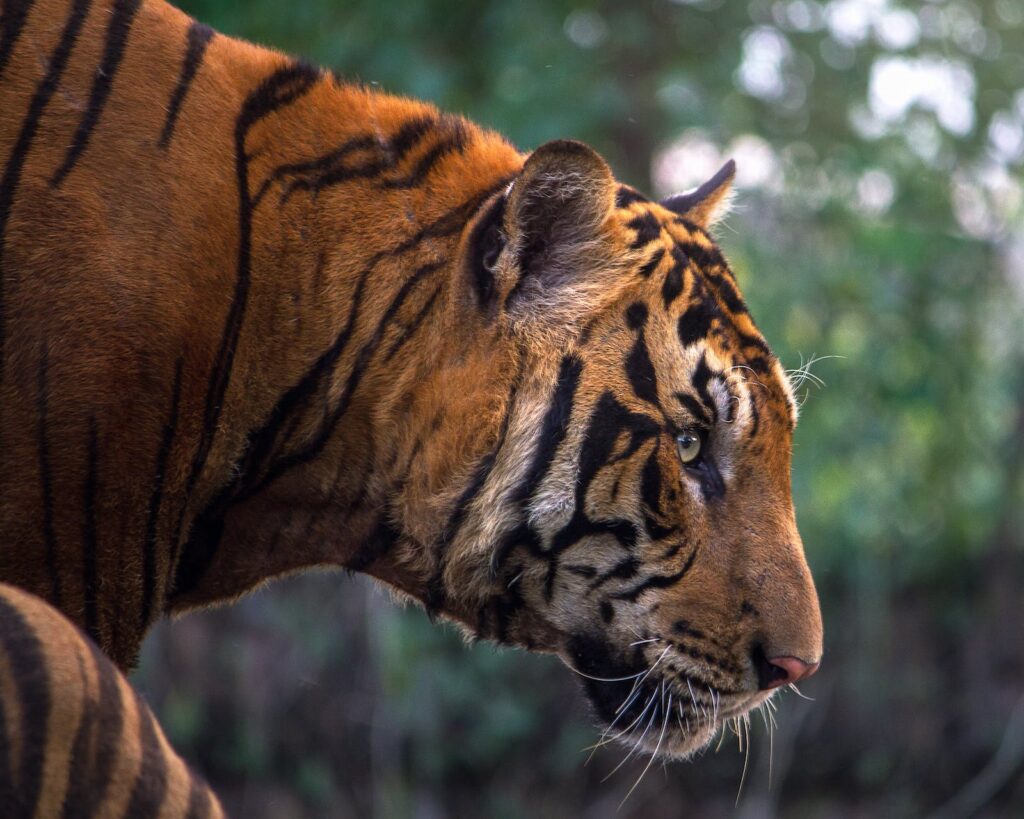
What is endangered species
Endangered refers to a species that is at risk of extinction, either globally or in a particular region or habitat. An endangered species has a very small population size and/or a very restricted range, and is facing significant threats to its survival.
The International Union for Conservation of Nature (IUCN) is the global authority on the status of species, and maintains a Red List of Threatened Species. Species are assessed and placed into categories on the Red List based on their level of risk of extinction, with the categories ranging from “Least Concern” to “Critically Endangered.”
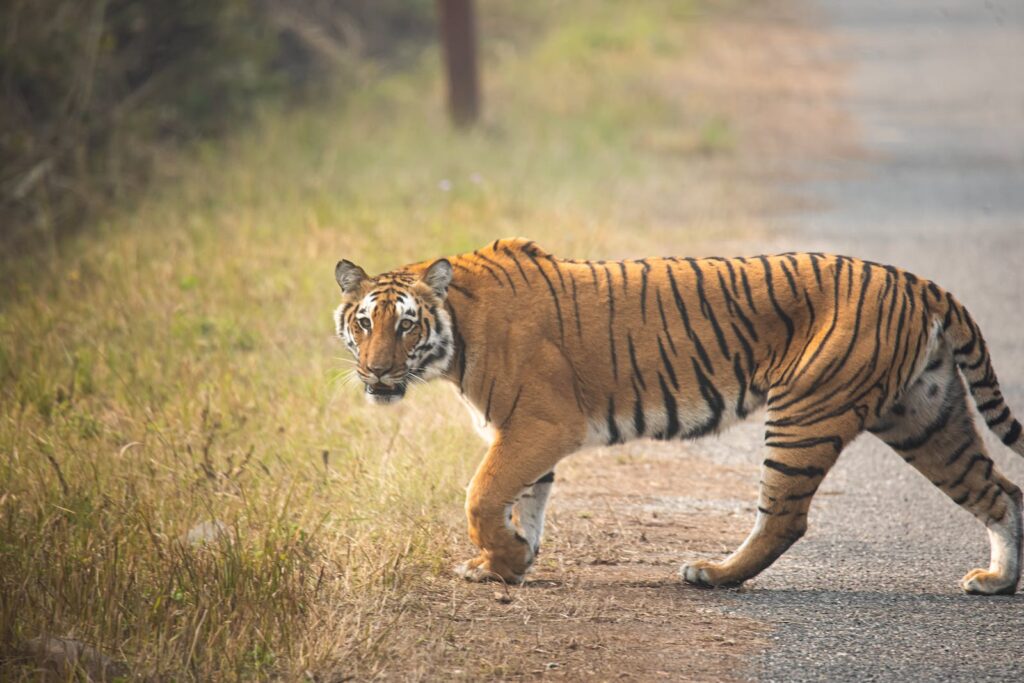
Tigers are endangered for several reasons, including:
- Habitat loss: The destruction of tiger habitat due to human activities, such as deforestation, agriculture, and urbanization, has significantly reduced the range and availability of suitable habitat for tigers.
- Poaching: Tigers are hunted for their body parts, which are used in traditional Asian medicine, as well as for their skins and other products. This illegal trade in tiger parts is a major threat to their survival.
- Human-wildlife conflict: As human populations continue to grow and expand into areas that were once tiger habitat, conflicts between humans and tigers can occur, leading to the killing of tigers in self-defense or retaliation.
- Climate change: Changes in climate patterns can affect the availability of prey species and water resources, which can have a negative impact on tiger populations.

Conservation efforts
Conservation efforts are crucial to protect and increase tiger populations. Here are some ways in which we can conserve tigers:
- Protected areas: Establishing protected areas, such as national parks and wildlife reserves, can provide safe habitat for tigers and their prey.
- Anti-poaching measures: Stricter laws and regulations, as well as increased enforcement, can help to prevent poaching of tigers and the illegal trade in their parts.
- Community-based conservation: Engaging local communities in conservation efforts can help to reduce human-tiger conflict and increase support for tiger conservation.
- Habitat restoration: Restoring degraded tiger habitat can help to increase the availability of suitable habitat for tigers.
- Research and monitoring: Conducting research and monitoring of tiger populations can help to better understand their behavior, ecology, and threats, and inform conservation strategies.
- Education and awareness: Raising public awareness about the importance of tiger conservation and the threats facing tigers can help to increase support for conservation efforts.
Conservation efforts need to be implemented on a local, regional, and global level, and require collaboration between governments, NGOs, local communities, and other stakeholders. By working together, we can help to protect and increase tiger populations, and ensure that these magnificent animals are preserved for future generations.
